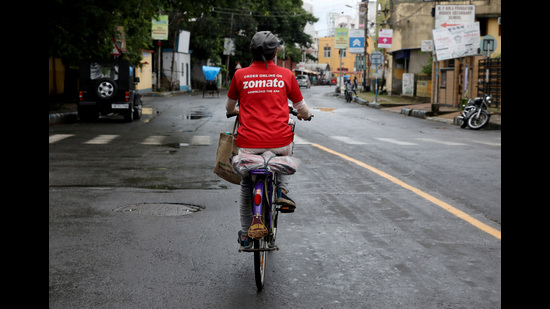Budget’s first steps to secure gig workers
Given the vulnerability of gig workers — estimated to reach 23.2 million by 2030 — some manner of solution needs to be teased out from welfare schemes
The announcement in the Union Budget that gig and platform workers will now be covered under the Pradhan Mantri Jan Arogya Yojana (PM JAY) and be registered with the e-Shram portal is a welcome push towards securing this rapidly growing segment of work. e-Shram registration, of course, will mean greater ease in accessing several government schemes for informal workers while the PM JAY inclusion will mean a cushion against secondary and tertiary health care expenditure incurred of up to ₹ 5 lakh annually.

Given the diverse but unidirectional characterisation of gig workers as “freelance workers” and even “independent partners” by the platform-economy players, a large chunk of the workforce (currently estimated at 10 million) battles precarity in various forms, from the lack of social security to wage and employment insecurity. Thus, formalisation, or at least efforts approaching this, has been a long-standing demand of gig workers in the country, mirroring the debate in other jurisdictions. There have also been legislative attempts to give gig workers some form of social security, through both central (Code on Social Security) and state laws (Rajasthan, Karnataka, and Jharkhand) which sometimes require platforms to shoulder some of the financing. Several judicial pronouncements, too, have recognised the gig workers’ vulnerability and the need for greater protection for them. Implementation is where these measures have been foiled, given the complexities and challenges that mark the changing nature of work the gig economy represents. The freedom to work with multiple platforms versus assigning contribution responsibilities to platforms, fixed remuneration terms versus freedom to deny service — there are multiple knotty questions.
Meanwhile, the vulnerability of gig workers — estimated to reach 23.2 million by 2030 — remains a growing concern, and some manner of solution needs to be teased out from welfare schemes. That is what the budget has attempted.
All Access.
One Subscription.
Get 360° coverage—from daily headlines
to 100 year archives.



HT App & Website







